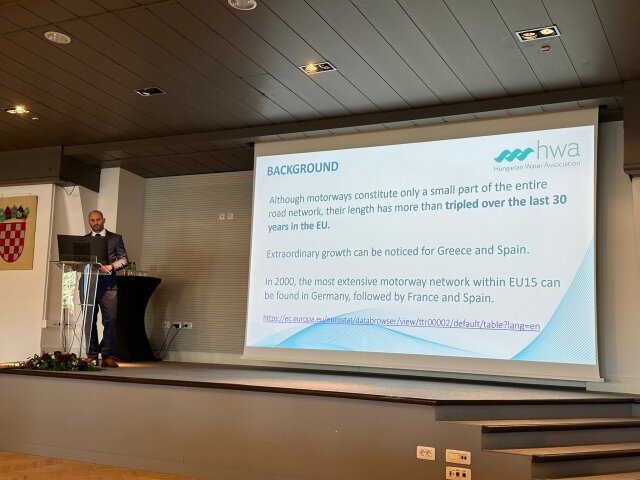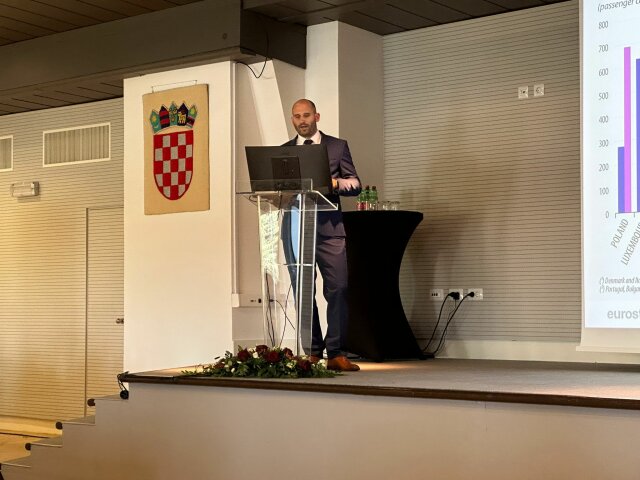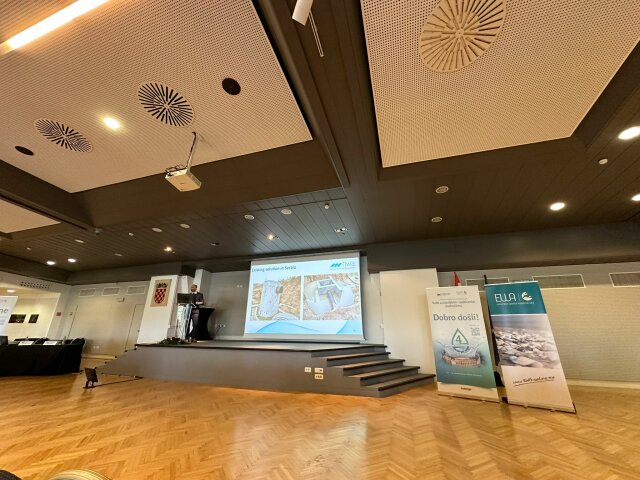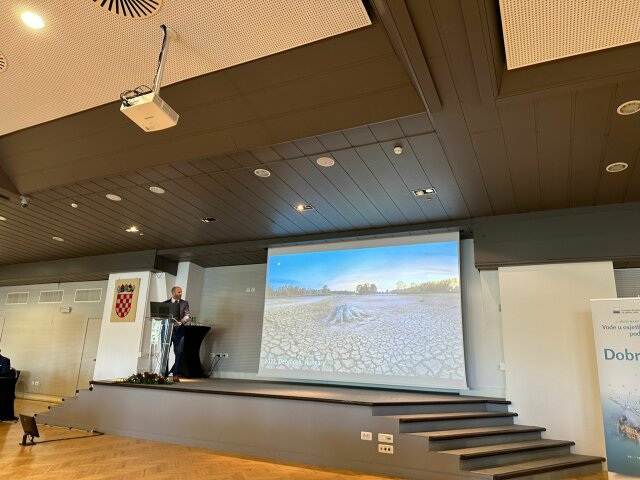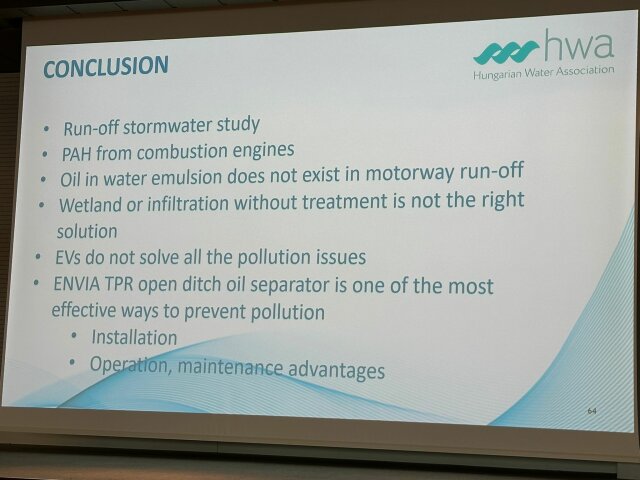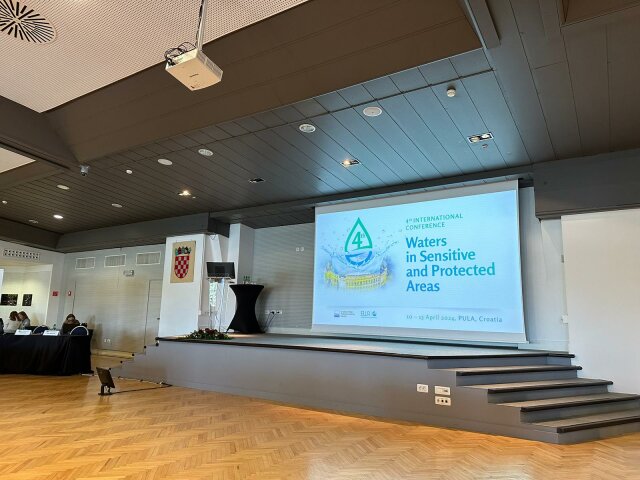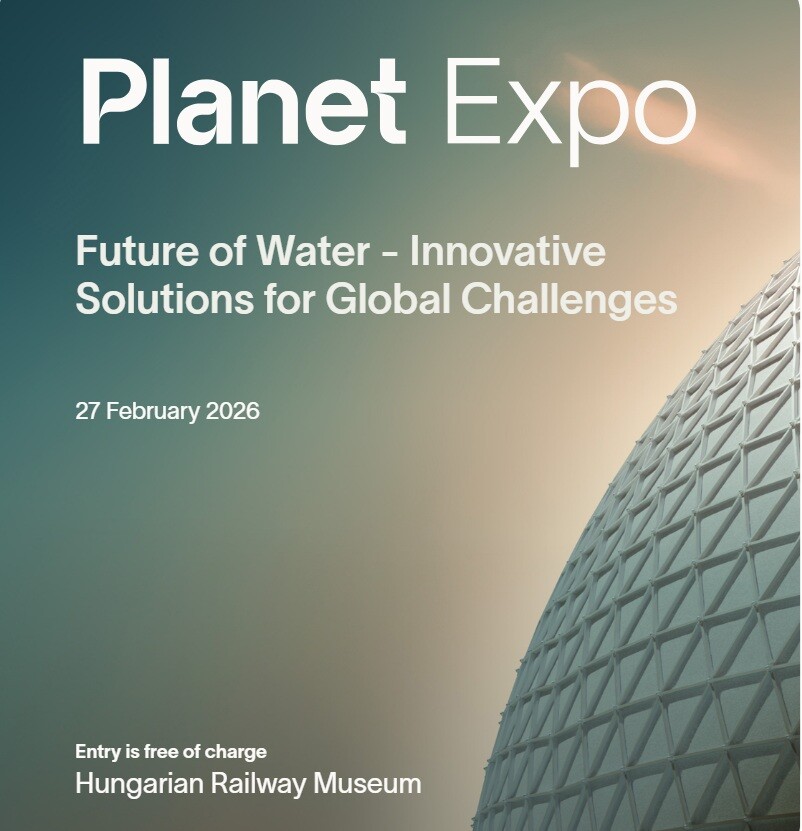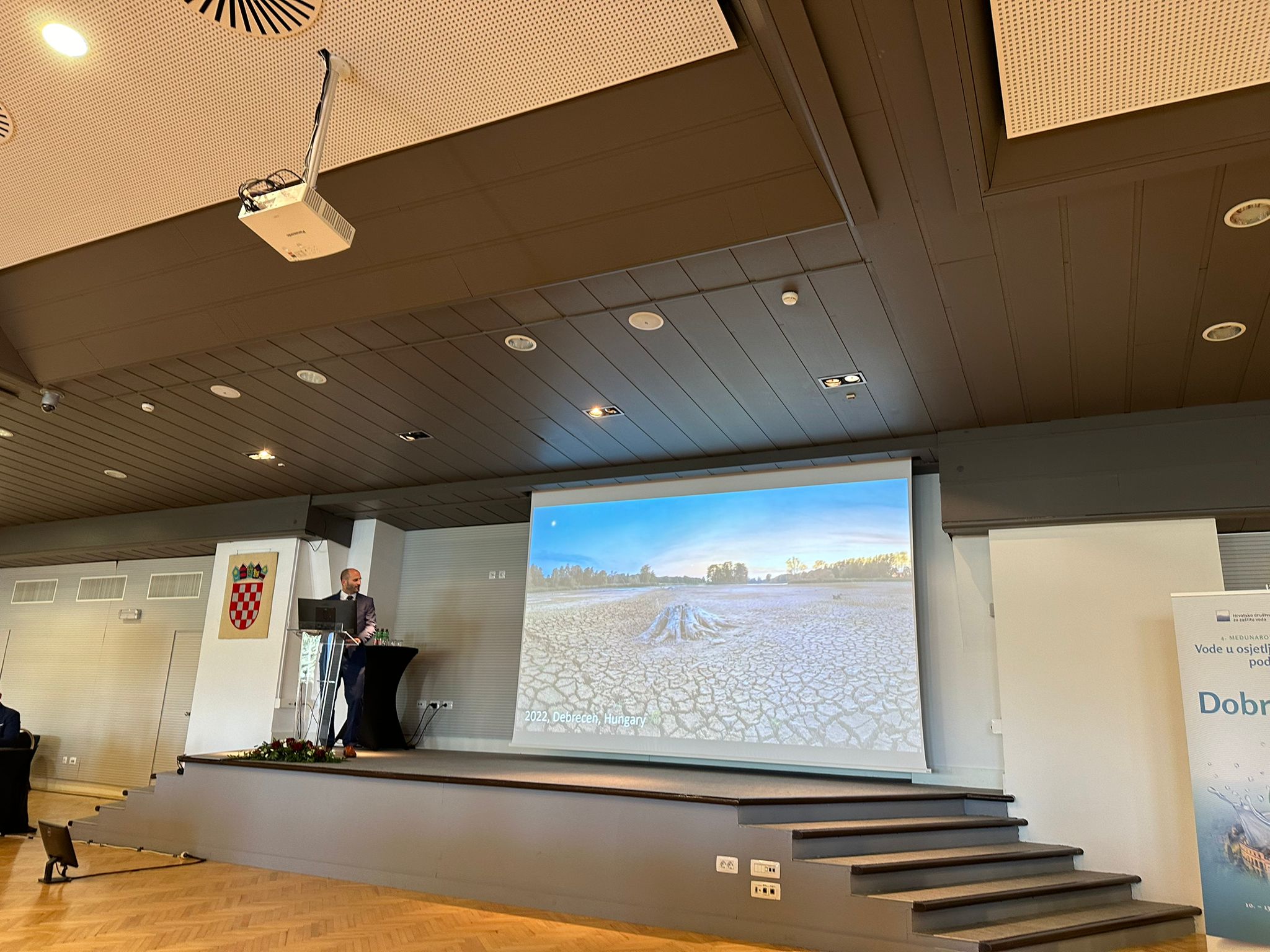
The European Water Association (EWA) and the e Croatian Water Pollution Control Society recently organized the 4th International Conference WATERS IN SENSITIVE AND PROTECTED AREAS, marking its fourth successful event.
This year's professional symposium saw active participation from EWA's Hungarian member organization. The leader of the Hungarian Water Association's (HWA) stormwater management working group, who also serves as the Managing Director of Pureco IDEA Ltd., gave an expert presentation titled "Prevention of Diffuse Water Pollution from Traffic Areas."
Sensitive and protected areas are vital not only for the conservation of natural and biological diversity but also for maintaining their values to meet various human needs. Day by day, we witness how human activities and dramatic population growth exacerbate the effects of climate and land-use changes on the physical environment. These result in the deterioration of human health and ecosystem services, pollution of water, soil, and air, disruption of climatic cycles, and lead to significant socio-economic and environmental impacts across various sectors due to extreme events such as floods, soil salinization, affected karst water bases, and coastlines threatened by tropical cyclones.
In his presentation, Mr Péter Dózsa showcased international research related to pollutants in precipitation falling on paved surfaces, detailing methods for treating contaminated stormwater, particularly on highways and emphasizing the use of devices in existing or built open ditches for the quick, professional, and efficient removal of diffuse pollutants.
He highlighted the importance of the activities of the HWA stormwater group and the association's commitment to environmental protection. Furthermore, he shed light on the multifaceted approaches needed to tackle the comprehensive problem of road traffic pollution, which requires active collaboration and cooperation of scientific, industrial, and association players.
This international event served as an excellent example of such collaboration and collective thought, presenting solutions and good practices supporting the protection of water and biological diversity across five thematic areas and 54 sub-topics.
It was a privilege for us to partake in this international dialogue along the lines of our sustainable, global, and regional water management, conservation, and water industry activities. For those inspired by the presentation and eager to continue the conversation on innovative environmental solutions, we are available to continue the dialogue and explore collaborative opportunities towards a greener future.

